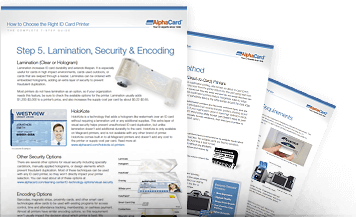Many organizations use their ID card printer to print their employee IDs, visitor badges, and more on demand. You can print on smart cards like you can a standard PVC card, but with a couple if important considerations.
What to Watch Out for When Printing on Smart Cards
Although smart cards may look and feel like a normal card, the embedded technology does create an uneven surface on the cards that will impact your ability to print. This is important for two reason:
First, you cannot print over any chips or antennas in the card. These are the most uneven areas. For cards with chips especially, you should only print on the back side of the card where the chip is not exposed. If you laminate your cards, you should only use the laminates with the smart chip cut-out.
Second, the surface of your cards can vary from batch to batch due to the embedded technology. You should always print a test card when you order new smart cards and adjust your design as necessary to work with the new cards (each order should include a pack of 10 PVC cards for testing). Be aware that this can be a time-consuming process.
How to Get the Best Results when Printing on Smart Cards
If you want to print on your smart cards, AlphaCard strongly recommends using reverse transfer printers – these printers will first print your design on the clear film, and then apply that film to the cards unlike a direct to card printer which prints directly onto the surface of the card.
If you already have a direct to card printer, an alternative is to print on thin adhesive-backed cards that can be applied to the card, skipping the step of printing on an uneven card surface that will require testing and design adjustments.
Or consider getting your cards pre-printed from the manufacture. Contact AlphaCard for more information about pre-printing cards with your custom design.




